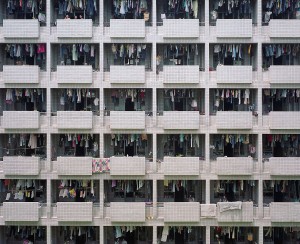 by GIORGIO GRAPPI – published in Italian on «il Manifesto», December 13, 2012
by GIORGIO GRAPPI – published in Italian on «il Manifesto», December 13, 2012
We interviewed Pun Ngai, a major scholar of the transformations of labour relationships in contemporary China, in the occasion of the recent translation in Italian of a collection of essays on the struggles of migrant workers in China. Pun Ngai’s studies provides a fundamental view of a reality which is crucial for those who aim to understand contemporary capitalism beyond national and regional borders, and who pretend to challenge it at its global and transnational level. The new Chinese working class is still mostly unknown, notwithstanding the growing importance of the Asian giants within global economy. Pun Ngai looks at the industrial development in China from the workers’ point of view. Subjective behaviors, expectations and the changing imaginaries produced by the combined action of the State and of the market are her main focus, with the collective actions of the workers themselves.
First, we would like to ask you about the situation in the industrial regions of China today, and how the part of the society not directly included in this industrial development sees these struggles.
The labor strikes and collective action are widespread now in the industrial towns of South China, and most of the migrant workers have the experience of participating in one of these actions during their work period. In general, the society at large is sympathetic to these actions as shown in the media reporting but most of the people will not directly participate in workers’ actions.
You focus on labor conditions, wages and the gap between expectations of these young, somehow educated, workers, and their life conditions once in the industrial town, with a specific position of young women in the production lines. This «second generation» migrant industrial working class seems to be attracted by the factory work, but less inclined to accept the hard condition of factory labor. What are the main differences with the previous generation of workers?
The new generation of workers is more prone to take actions and fight for their own rights compared to their previous generations. This is because the young workers of the new generation are more tempted to live in the city due to the increasing gap between rural and urban life in the rapid period of industrialization. These young workers are more educated, more critical and more eager to fight for their own way of life, i.e., not willing to confine to the factory system that only provide them a meagre wage which is impossible to support them to live in the city. Remember that these young workers are classified as “peasant-workers” and the wage they received are not for them to support their daily reproduction in where they work, but requested them to go back to their rural hometowns. However, due to the non-development or little development of the rural community for the past two decades, there is no way for the young generation of the workers like their previous one to go back hometown and rely on the land resources to keep a basis subsistence. No progress, and no retreat is the new problem for the new generation in this century.
A recurring point in your analysis is the gap between the city and the countryside, and particularly how the city is at the core of the process of proletarization, and of the formation of a new working class. What is the relation between this process, and the labor organization/conditions in farming?
There is a trend that large pieces of farm land at the suburban areas are rapidly taken over by private companies for thirty years up to seventy years and they turned middle-aged or above farmers into wage-laborers, engaged in cash cropping such as vegetables, fruits and flowers. Today, capital not only flows to the industrial areas, but also countryside, and these two spheres are intertwined.
How does government and traditional unions reacts to this wage of workers’ insubordination? Do you see other actors in this process?
On paper, the national government have often released policies that are pro-labor such as Labor Contract Law and Labor Arbitration Law, but most of these policies are not seriously implemented through the local governments whose interest are tied up with private investors. As a consequence, unless in state-own enterprises, there will have contract workers as well as permanent workers. In most of the workplaces in manufacturing, construction and service sectors, the workers are all temporary and/or contract workers. The traditional unions are not effectively run and hence they are not present when the workers are taken actions or in need of their help. The official trade union is very effective unless the labor conflict turn into a “social unrest” that would threaten the stability of the society, and hence under this context, the trade union would be under pressure to come out and intervene into the labor actions. For example, in the case of Honda strike in Foshan, Guangzhou in 2010, The Guangdong All China Trade Union Confederation stepped into the strike and helped the workers to run a direct election in order to set up a factory-based trade union. Since the mid 1990s, there are labor NGOs emergent in China, especially in Shenzhen, Guangzhou and Beijing, and these labor NGOs, most of them are grass-root oriented and received support from the workers. These labor NGOs also provides cultural activities, labor rights education, safety preventions and strategies of labor organizing to workers.
We have followed the yearlong labor unrest at Maruti Suzuki factory in Gurgoan-Manesar, India, along the Delhi-Mumbai Industrial Corridor, an Indo-Japanese project. Here it seems that the concepts of Industrial Corridor and New Town are exceeding the first introduction of SEZs, with a complex planning. At the same time, labor unrest inside these contexts is widespread, and it seems economically more powerful than the struggles against dispossession or against SEZs. Do you see any similarity with the situation in China?
I would say that the concept and the political environment of China’s SEZs and India’s Industrial Corridor are pretty much similar but the role of trade union is different. In China, the strikes are widespread but short-lived because they are lacking institutional base to sustain the labor actions.
The role of migrant labor, and the migrants’ condition defined in China by the residence system (hukou) is a major topic in China, and in your research. Nevertheless, the migrant condition is widespread and common to millions of workers also in other areas, like Europe. Do you think is possible to compare these situations?
Yes, in the context of global capitalism, the situation in China must share a lot more commonality with that of Europe in term of migration and exclusion. I often argue for a double subsumption of migrant labor: subsumption to the state and subsumption to capital. The state creates a situation of exclusion in which exploitation is easier to take place.
Labor unrest and the strikes in China become a global news, particularly after the involving of Foxconn and well-know brands as Apple. Nevertheless, China is still considered under a double angle: as the black hole of labor rights, and a place where something relevant for the global relation between labor and capital is happening. How does Chinese workers see themselves against this background?
At micro level, Chinese workers understand themselves as a cog of a big machine in the role of world factory producing cheap or expansive products to global consumers. At the macro level, they understand there is an issue of economic injustice in the sphere of production and redistribution because what they earn is too little compared to the wealth they created.
In your research it clearly emerges how academic research played an important role in removing the political problem of the working class. A common tendency, with different trajectories, in western and Chinese sociology. Do you think something is changing?
I have expectation that intellectual fields (not necessary academic fields) can have more crossovers with workers’ fields so that these two agents of our society can rebuild a link to rethink and transform the existing capitalist system. More students in China are learning how to work and live with the workers, for example by going to work inside factory during summer and winter breaks. Students often end up writing beautiful factory investigation reports and these reports have been sent to transnational corporations and the Chinese state in order to generate pressure to improve the working conditions of the working class. A good example is SACOM (Students and Scholars Against Corporate Misbehavior). Every year, students provide reports campaigning at Apple, Foxconn, Disney, HP, Walmart, and many others. Their reports are widely reported by international media.
 ∫connessioniprecarie connettere gli ∫connessi, produrre comunicazione
∫connessioniprecarie connettere gli ∫connessi, produrre comunicazione



